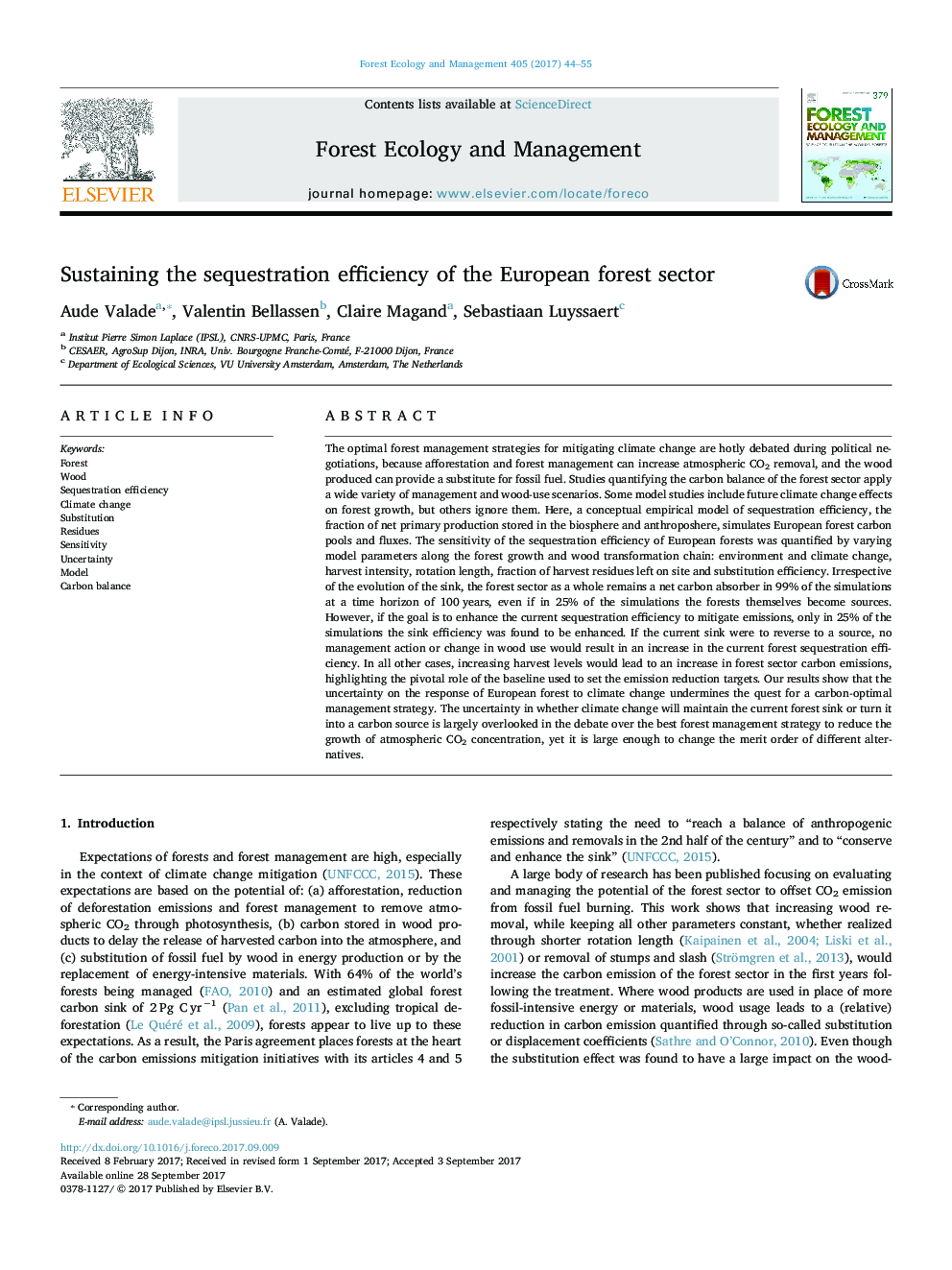| کد مقاله | کد نشریه | سال انتشار | مقاله انگلیسی | نسخه تمام متن |
|---|---|---|---|---|
| 6459048 | 1421353 | 2017 | 12 صفحه PDF | دانلود رایگان |
- Carbon-optimal management of European forest depends on its response to climate change.
- The European forest sector remains a net carbon absorber in 99% of the 100-years simulations.
- Only in 25% of the simulations was sequestration efficiency found to be enhanced.
- If the current sink were to reverse to a source no management would increase the current sequestration efficiency.
The optimal forest management strategies for mitigating climate change are hotly debated during political negotiations, because afforestation and forest management can increase atmospheric CO2 removal, and the wood produced can provide a substitute for fossil fuel. Studies quantifying the carbon balance of the forest sector apply a wide variety of management and wood-use scenarios. Some model studies include future climate change effects on forest growth, but others ignore them. Here, a conceptual empirical model of sequestration efficiency, the fraction of net primary production stored in the biosphere and anthroposhere, simulates European forest carbon pools and fluxes. The sensitivity of the sequestration efficiency of European forests was quantified by varying model parameters along the forest growth and wood transformation chain: environment and climate change, harvest intensity, rotation length, fraction of harvest residues left on site and substitution efficiency. Irrespective of the evolution of the sink, the forest sector as a whole remains a net carbon absorber in 99% of the simulations at a time horizon of 100Â years, even if in 25% of the simulations the forests themselves become sources. However, if the goal is to enhance the current sequestration efficiency to mitigate emissions, only in 25% of the simulations the sink efficiency was found to be enhanced. If the current sink were to reverse to a source, no management action or change in wood use would result in an increase in the current forest sequestration efficiency. In all other cases, increasing harvest levels would lead to an increase in forest sector carbon emissions, highlighting the pivotal role of the baseline used to set the emission reduction targets. Our results show that the uncertainty on the response of European forest to climate change undermines the quest for a carbon-optimal management strategy. The uncertainty in whether climate change will maintain the current forest sink or turn it into a carbon source is largely overlooked in the debate over the best forest management strategy to reduce the growth of atmospheric CO2 concentration, yet it is large enough to change the merit order of different alternatives.
Journal: Forest Ecology and Management - Volume 405, 1 December 2017, Pages 44-55
